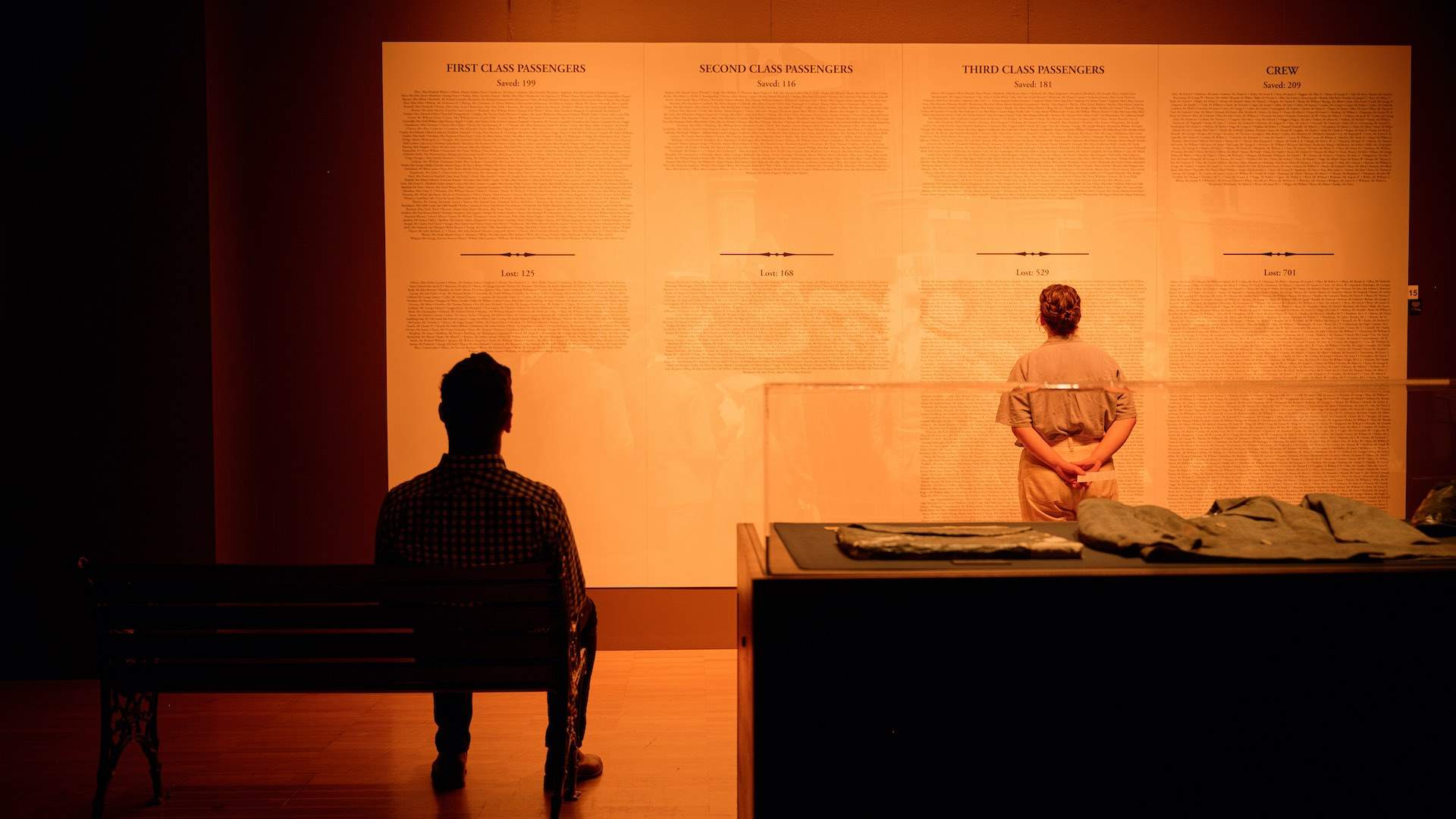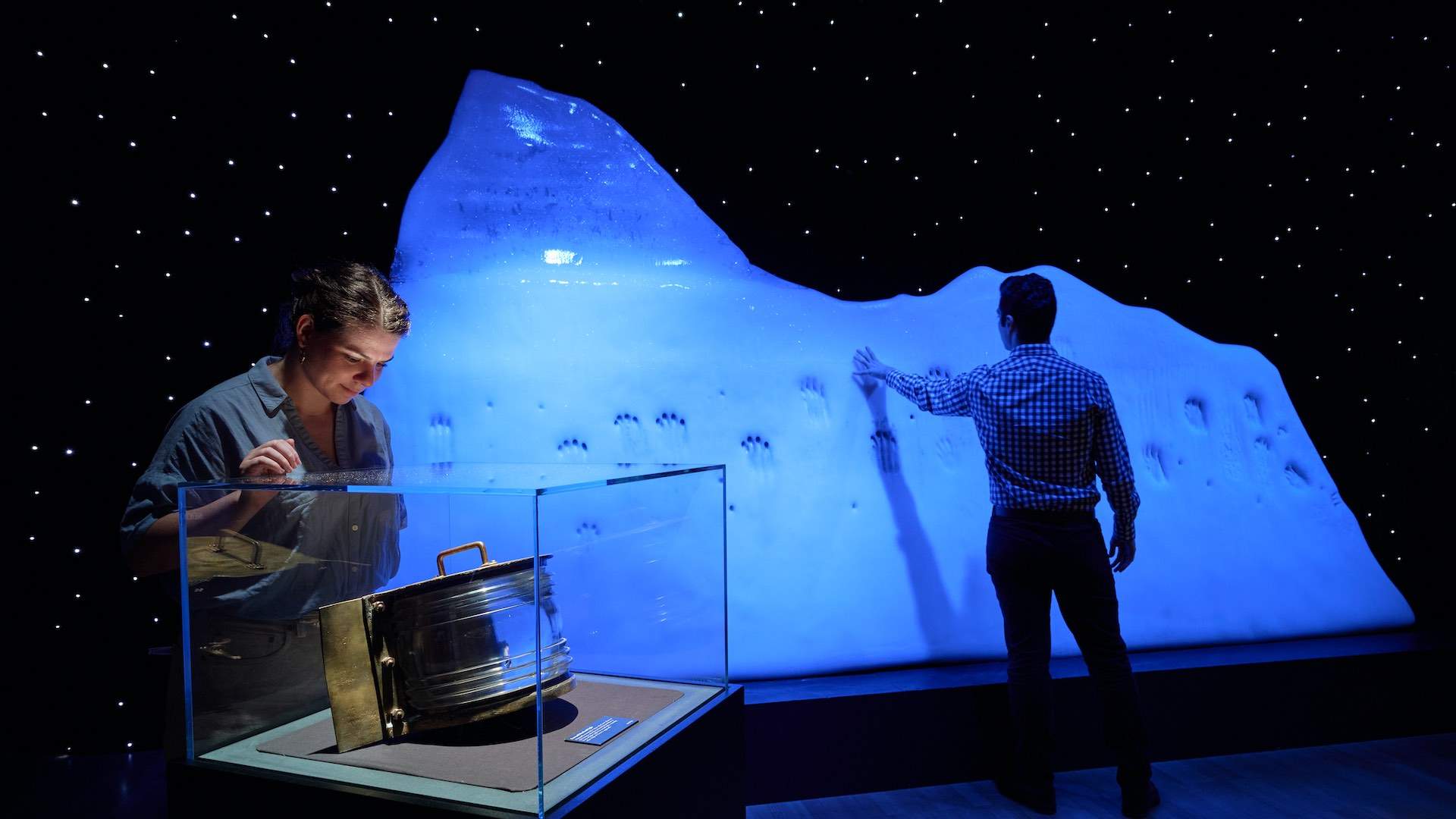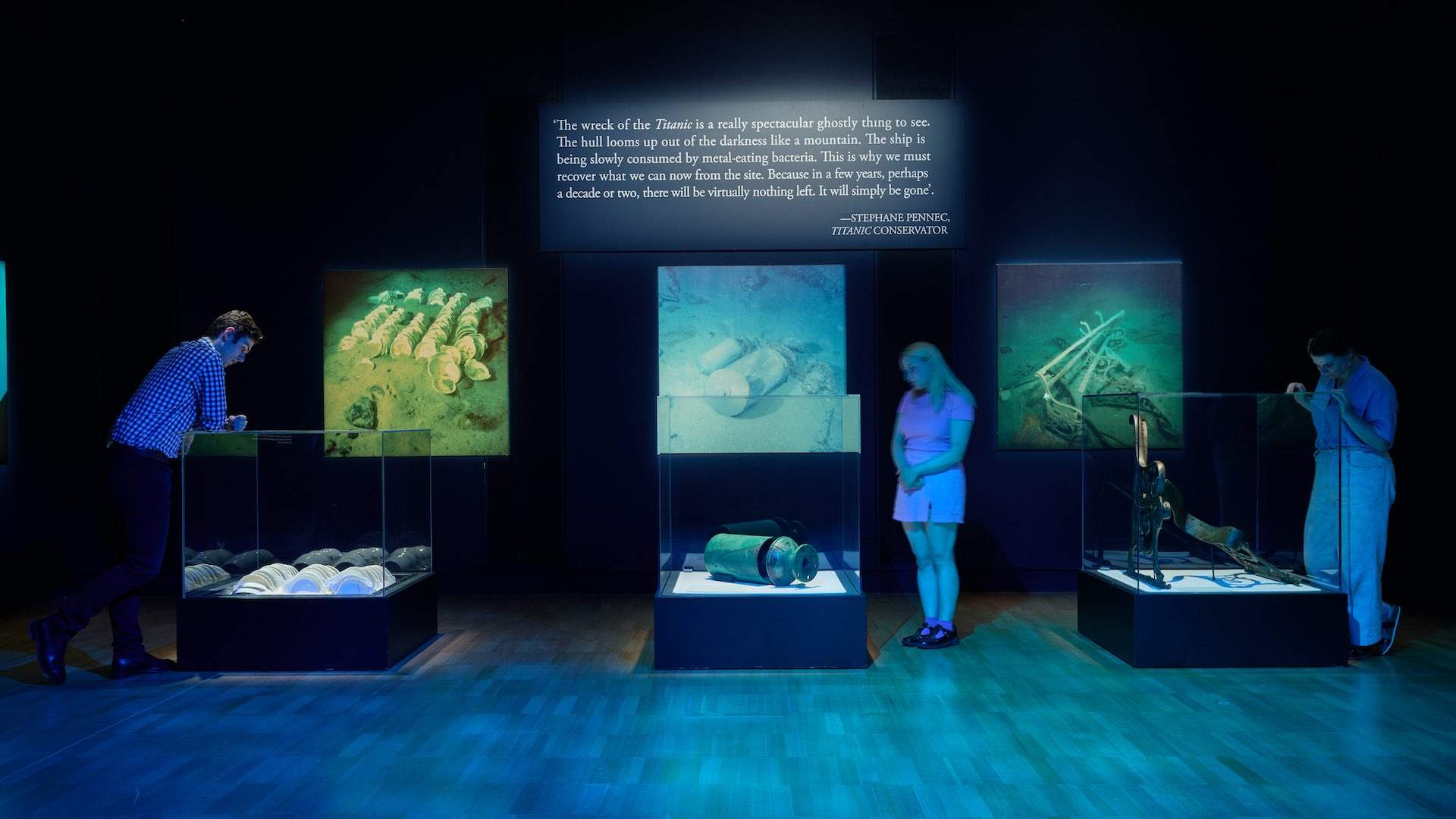Five Ways 'Titanic: The Artefact Exhibition' Makes You Feel Like You're Actually on the Ship
This exhibition is the most detailed exploration of history's most infamous shipwreck to ever run in Australia.
In partnership with
It was a cold and quiet night on the Atlantic Ocean on April 14, 1912, when the Titanic, the largest passenger ship ever constructed at the time, struck an iceberg and sank, taking the lives of 1,517 passengers and crew. The story is as well known as it is tragic, and regarded as one of, if not the most devastating shipwreck in human history. Most people alive today know the story from the legendary James Cameron love story, which dramatises the story in film.
A more engaging way to learn this tragic story is to Titanic: The Artefact Exhibition, an incredibly detailed exhibithion that studies the vessel, its crew, the passengers and takes visitors through a memorable journey through the events of that fateful night. But how does it do that and why is it worth your time? Let's set sail to find out.


By Telling the Story of Real Passengers
As acclaimed as James Cameron's film is, it does take one liberty. One of the two main characters, Jack, played by the one and only Leonardo DiCaprio, was not a real passenger. Of course, the significant passenger manifest made it likely that a number of anonymous passengers could have been lost that night (of 700+ third-class passengers, fewer than 200 survived), but it's best to focus on the truth when discussing the tragedy.
That's why the exhibition puts the focus on the voices of the real, documented passengers. The Titanic was host to so many stories of love and loss, since most of the passengers who survived, by being the first to be evacuated and rescued were women and children, while hundreds of husbands, lovers and fathers lost their lives. But there are some stories with happier endings, like the story of a young Australian stewardess who stepped up with her childhood rowing experience to captain lifeboat number 16 to safety after disaster struck.


Immersing You in the Voyage with Recreated Interiors
At the time of its construction, the Titanic was the largest vessel in human history. It was designed to be the pinnacle of maritime engineering and passenger comfort, with first-, second-and third-class accommodation for its passengers. Much of the iconic livery could be found in first and second class, including an immense first-class dining room, multiple elevators and second-class accommodation comparable to first-class on other vessels.
It's no surprise then that the exhibition doubles down on faithful recreations of the livery and architecture that once shone inside the ship. You'll find detailed room recreations that transport you back in time like nothing else can. From simple corridors to the sweeping grand staircase to a plush first-class cabin and modest third-class cabin, you'll get a glimpse of the rooms where the fated passengers spent their days before the ship's untimely end.


Interactive Displays That Transport You to That Fateful Night
As history and survivor accounts tell us, pandemonium did not immediately set in when the Titanic struck the iceberg. The initial impact took place shortly after 11pm, but it wasn't until around 1am, once evacuations were well underway, that true panic began to set in. The death toll may have been even higher if not for the arrival of the Carpathia an hour after the Titanic slipped beneath the surface, leaving survivors exposed to the cold ocean.
This is an important part of the story that you'll literally be walking through inside the exhibition, which starts at the entrance when you receive a boarding pass printed with a randomly selected name of a real passenger. Exploring the recreated interiors and stories in the exhibition, you'll eventually arrive in a dark and chilly room to learn how the ship met its fate. The centrepiece of this section is a hands-on display, a sheet of ice chilled to the temperature the water would have been on that icy April night.

Displaying Real Artefacts Recovered Directly From the Wreck Site
The rush to understand how the "unsinkable" Titanic sank began before its survivors had even arrived in New York, but deep-sea exploration was a thing of science fiction in the early 20th century. By the time the wreck settled on the ocean floor, it was almost four kilometres below the surface. It wasn't until 1985 that an expedition was able to reach the wreck, which is split in half across around 600 metres in an area of seafloor now named 'Titanic Canyon'.
Since its discovery, hundreds of artefacts have been recovered from the wreck, and scientists believe that in the decades to come, the wreck may disintegrate completely. The salvage work of groups like RMS Titanic Inc (the curators of this exhibition) has ensured the story will be preserved for centuries to come. More than 200 of those artefacts are spread throughout the exhibit, from ship equipment to relics of the era and the personal effects of the passengers themselves.


Offering a High Tea to Accompany the Experience
Learning so much about the real story of this infamous disaster can wear heavy on the heart; tales of lost loved ones can leave an impression, after all. While the purpose of Titanic: The Artefact Exhibition is to realise the full tragedy of the voyage, it does offer an optional transition experience at the end to decompress and discuss the exhibit with your fellow guests.
Complete your visit with the Titanic High Tea, a recreation of the cuisine that would have been enjoyed by first-class passengers onboard the vessel. In 1912, fine dining was all about French cuisine, and in the case of Titanic, that food would have been made with high-end British produce. That's been recreated at Melbourne Museum by Michelin-trained Executive Chef Keith Higginson, who has crafted a bespoke tiered menu of cuisine inspired by that rich history, which can be enjoyed alongside tea and coffee in an elegant lounge.

Titanic: The Artefact Exhibition must close on Sunday, April 21. Evening sessions are available. For more information or to make a booking, visit the website.








